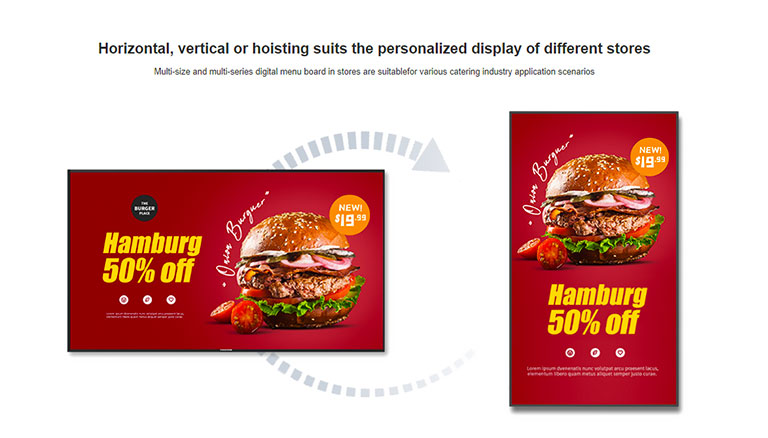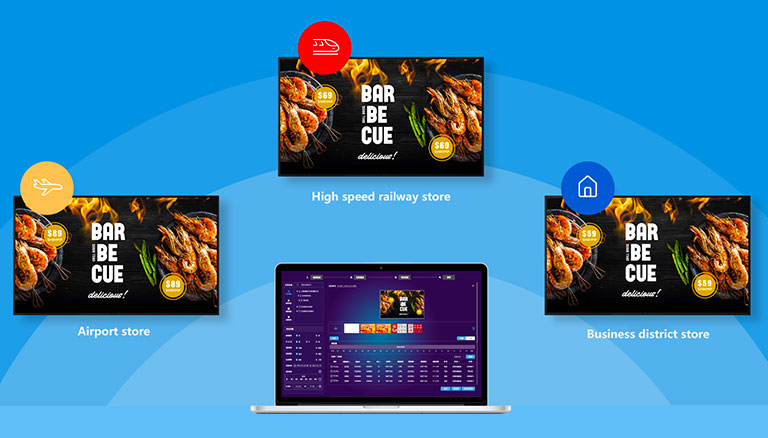With the continuous development of commerce and consumerism, digital signage has gained significant importance in the advertising media market. It has become a highlight in the advertising industry, integrating into various aspects of people’s lives and work in a networked, digital, and information-oriented multimedia form. Below are eight popular characteristics of digital signage in the market.
1. Multimedia Communication
Digital signage has the capability of multimedia communication, utilizing sound, text, images, and other forms of information to make advertisements more vivid and captivating. It provides an opportunity for businesses to showcase creativity and
proactivity, making advertisements more appealing.
2. Flexible Timing
Digital signage surpasses the limitations of time and space, offering a more flexible way of advertising. Businesses can choose different time slots for display according to their needs, and even achieve round-the-clock advertising to achieve more effective results.

3. Technological Support
Digital signage players require technical support, challenging traditional advertising concepts and demanding businesses to possess composite talents in digital signage operation, video editing, computer technology, and image processing to gain a competitive advantage in the fierce market.
4. Personalized Advertising
Digital signage enables one-to-one, rational, non-coercive personalized advertising, distinguishing itself from traditional mandatory advertising. This low-cost, user-friendly advertising method builds long-term customer relationships through information provision, making it more readily accepted.

5. Environmental-Friendly and Energy-efficient
Digital signage is more sustainable compared to traditional advertising methods like flyers and newspaper ads. It reduces printing, mailing, and expensive television advertising costs. Additionally, digital signage has large storage capacity and high information transmission accuracy, allowing timely updates to meet customer demands.
6. Efficient Information Dissemination
Digital signage has a large storage capacity and surpasses other media in terms of information quality and accuracy. It also possesses real-time updating and information adjustment capabilities, enabling quick responses to market demands and efficient information dissemination.
7. Cost-effectiveness
Digital signage can replace traditional advertising methods such as flyers, newspapers, and television ads, thereby reducing advertising costs. Furthermore, rewritable CF and SD cards minimize losses associated with information updates, improving cost-effectiveness.

8. Wide Range of Applications
Digital signage finds extensive applications in various locations, including large supermarkets, clubs, squares, hotels, government institutions, and homes. They are renowned for their efficient advertising content, quick information updates, and easily changeable content. Digital signage has replaced traditional advertising methods, becoming more reliable and convenient.
In summary, digital signage represents the future of the advertising media market. Its characteristics of multimedia communication, flexible timing, technological support, personalized advertising, environmental-friendliness, efficient dissemination, cost-effectiveness, and wide applications make it highly popular. With the continuous development of new technologies and interactive displays, digital signage will further enhance its effectiveness and become a key tool in the advertising field.
Post time: Oct-30-2023





